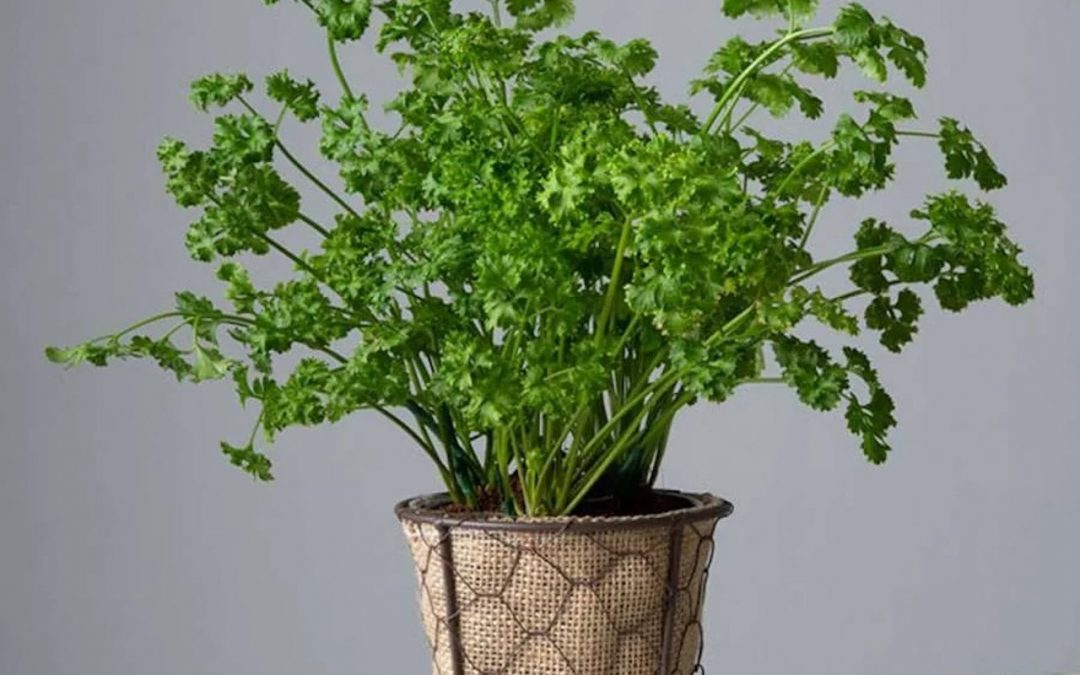Contents
How to Grow Parsley Indoors (Beginner-Friendly Guide)
Parsley is one of the most popular culinary herbs, and the good news is—you can grow it indoors all year round! With its fresh, earthy flavor and wide range of uses in soups, salads, sauces, and garnishes, parsley is a must-have for any kitchen herb garden. This beginner-friendly guide will show you how to grow parsley indoors successfully, even if you’ve never grown herbs before.
Why Grow Parsley Indoors?
Fresh harvest anytime: Perfect for cooks who love using herbs regularly.
Saves money: No need to buy small supermarket bundles.
Compact and decorative: Fits easily on a windowsill or kitchen counter.
Year-round supply: No waiting for summer to enjoy fresh parsley.
Nutritional boost: Rich in vitamins A, C, and K, parsley supports overall health.
Best Parsley Varieties for Indoors
Curly Leaf Parsley (Petroselinum crispum): Classic garnish herb, easy to grow.
Flat Leaf (Italian) Parsley: Stronger flavor, widely used in cooking.
Hamburg Parsley: Grown for both leaves and edible roots.
Choose flat-leaf parsley if you’re growing for cooking, as it tends to be more flavorful and versatile in the kitchen.
Step-by-Step: Growing Parsley Indoors
1. Choose a Suitable Container
Depth: At least 8 inches, as parsley has long taproots.
Drainage: Always use pots with drainage holes.
Wide pots allow you to grow multiple plants together for a larger harvest.
Try this self-watering indoor herb pot on Amazon UK to keep your parsley hydrated without the guesswork.
2. Soil Requirements
Use a well-draining potting mix rich in organic matter.
Avoid compacted garden soil, which restricts root growth.
Add perlite or vermiculite to improve aeration.
This organic indoor herb potting mix is ideal for parsley and other leafy herbs.
3. Planting Parsley
Seeds: Soak seeds overnight for faster germination.
Sow ¼ inch deep and keep moist until sprouts appear (2–3 weeks).
Transplants: Starter plants can be repotted directly into your chosen container.
4. Light Needs
Parsley needs 6–8 hours of sunlight daily.
South-facing windows are ideal.
Use grow lights if natural light is limited.
Boost growth with a full-spectrum grow light designed for herbs that mimics natural sunlight.
5. Watering
Keep soil evenly moist but not soggy.
Water when the top inch of soil feels dry.
Parsley prefers consistent moisture—don’t let it dry out completely.
6. Feeding
Use a liquid herb fertilizer every 4–6 weeks.
Avoid overfeeding, which can reduce flavor intensity.
Check out this all-purpose organic liquid fertilizer perfect for parsley and leafy greens.
7. Harvesting
Wait until the plant has at least 3 sets of leaves.
Cut stems from the outside, leaving inner growth to mature.
Regular harvesting encourages more growth and prevents legginess.
Common Parsley Growing Problems
Yellow leaves: Overwatering or poor drainage.
Slow growth: Not enough light—add a grow light.
Leggy plants: Crowded seedlings or insufficient trimming.
Wilting: Often a sign of inconsistent watering.
How to Use Fresh Parsley
Add to salads, soups, and stews for a fresh flavor boost.
Use in pesto, chimichurri, or tabbouleh.
Garnish roasted meats, fish, or grilled vegetables.
Dry or freeze extra leaves for later use.
Blend into smoothies for extra vitamins.
Final Thoughts on Growing Parsley Indoors
Parsley is a fantastic herb for beginners because it’s hardy, versatile, and low-maintenance. By giving it the right amount of light, water, and occasional fertilizer, you can enjoy a continuous supply of fresh parsley all year round. Not only will it upgrade your cooking, but it will also add vibrant greenery to your home. Investing in the right tools—like a quality potting mix, grow light, and self-watering pot—makes the process even easier and ensures healthier growth.
Once you’ve mastered parsley, you’ll find it easy to expand your herb garden with basil, mint, or cilantro, giving you a full indoor herb setup that saves money and enhances your cooking. For more parsley care information, check out the RHS guide to growing parsley.

